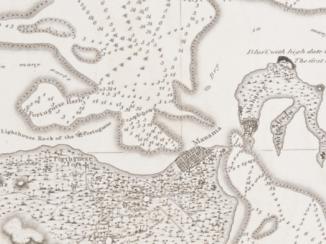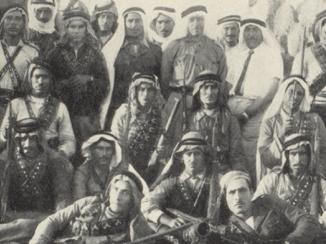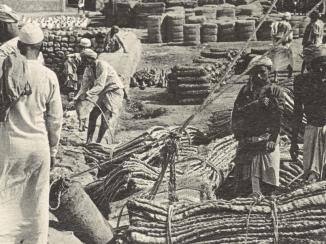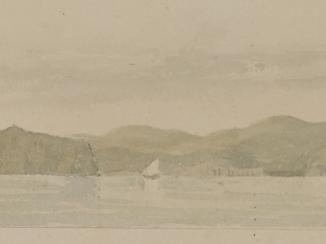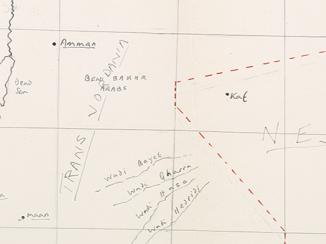Overview
Who was Reza Shah?
Reza Shah Pahlavi (r. 1925-1941) started out in life as Reza Khan Savadkuhi, a poor soldier from the province of Mazandaran, and rose through the ranks to become commander of the Persian Cossack Brigade. His rise to prominence came in the wake of the devastation caused by the First World War: though neutral, Iran had been occupied by the Allies and was wracked by shortages, inflation, and famine, while rebellions broke out across swathes of the country.
Following a 1921 coup, Reza Khan became War Minister, and soon afterwards Prime Minister. His ascension was supported by the British. Having abandoned Lord Curzon’s plans to make Iran a British protectorate, Britain favoured the creation of a strong authority to keep the country from disintegrating or falling into the orbit of the USSR, which had already shown support for the anti-imperial Jangali Movement in Gilan.
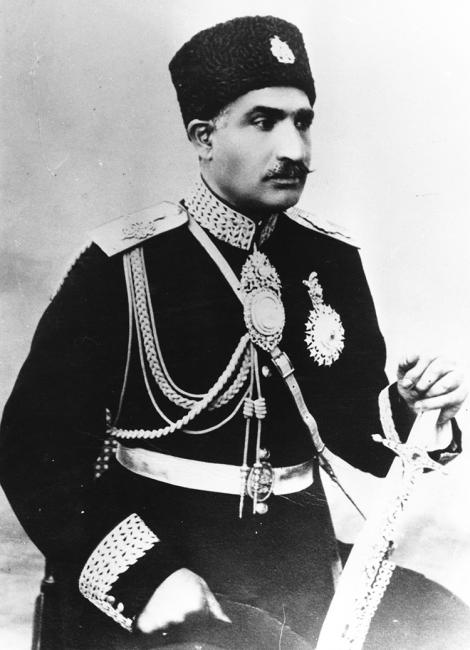
In 1925, after toying with the idea of a Kemalist Iranian republic, Reza Khan took the throne himself. He adopted the surname Pahlavi (after an ancient, pre-Islamic Iranian script) in an effort to appropriate the lustre of the great Persian empires of antiquity.
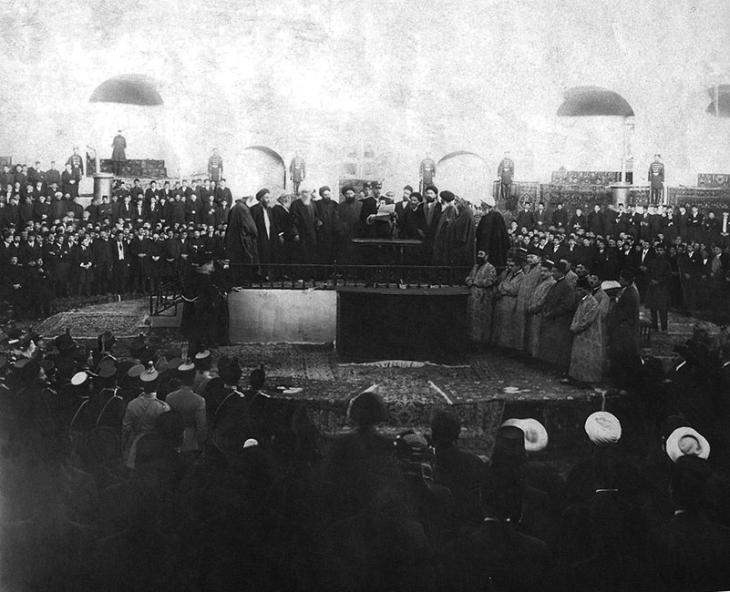
Centralising Power
Reza Shah’s aim was to create a robust, “modernised” Iran with a national army and centralised state. A key part of this project was disarming and breaking the power of the tribes and regional polities, which had a particular relevance for the Gulf.
Since the eighteenth-century, a number of Arab shaikhs along Iran’s Gulf coast had governed in a contractual, tributary relationship with the Iranian state, with which they periodically clashed for greater autonomy. Under Reza Shah, however, these Arab shaikhs, like Kurdish, Bakhtiari, and other rulers in the interior, as well as Baloch leaders further east, were disarmed, arrested, exiled, and sometimes killed.
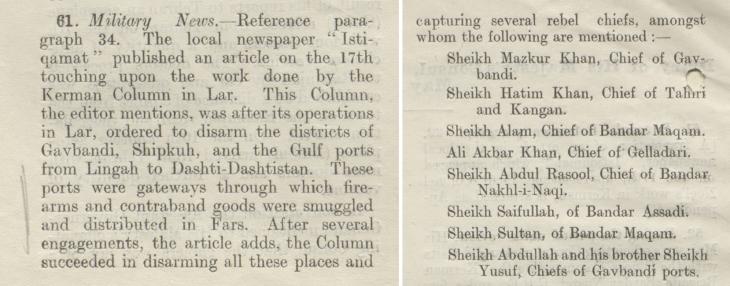
This centralisation of power, alongside the state’s efforts to establish a monopoly on overseas trade, drove many to emigrate across the Gulf.
A New Assertiveness in the Gulf
Reza Shah’s centralising project was informed by his vision for Iran: a strong country free from the manipulation of foreign powers. Foremost among such powers was Britain. Once on the throne, Reza Shah began cancelling the capitulations that had been granted to the British under the Qajars. These included separate courts and customs duties, which benefited foreign traders at the expense of Iranians. He also began actively to challenge Britain’s hegemonic role in the Gulf.
Alongside expanding the army, Reza Shah began developing the Imperial Iranian Navy. This was intended both to combat smuggling and to establish Iran as a Gulf power in its own right. The Minister of Court and veteran diplomat, Abdolhossein Teymurtash, is reported by the British Minister in Tehran, Sir Robert Clive, to have said that Iran was content to be the second power in the Gulf after Britain, ‘but she wished and intended to establish her right to that second place and to have her territorial waters respected’ (IOR/L/PS/12/3776, f. 307r).
Despite foreseeing friction between Iran and its neighbours, Britain gave reluctant support to the naval project, hoping thereby to exert control and keep the Iranian fleet small and innocuous. To Britain’s alarm, however, the contracts went to Mussolini’s Italy, which provided ships, seconded officers, and training.
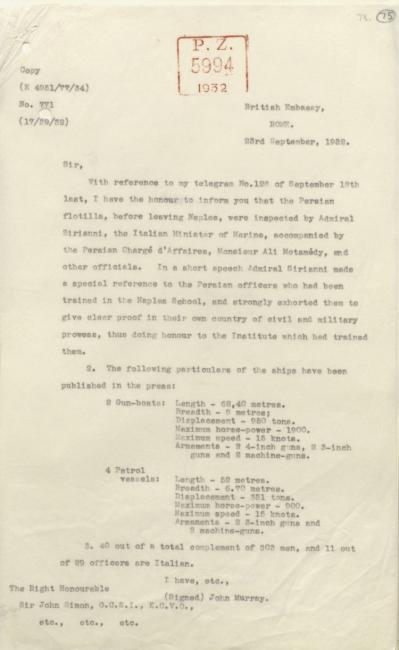
Meanwhile, in 1927 Reza Shah appointed Teymurtash to negotiate a comprehensive new treaty with Britain. In the years of negotiations that followed, Iran contested British concessions and sovereignty over various islands including Hengam, Abu Musa, and the Tunbs.
One of the most problematic aspects of the negotiations was Iran’s claim to Bahrain. Historically, Bahrain had been subject to some form of Iranian rule or suzerainty at several points, and Reza Shah’s government now revived its claim to the islands. While Iran needled the British with regulations treating both goods and people coming from Bahrain as Iranian, Teymurtash also insisted on keeping Bahrain on the table during negotiations. It seems, however, that this was more a bargaining chip than serious irredentism, as Iranian officials expressed willingness to abandon the claim in exchange for other concessions, such as military equipment and debt relief.
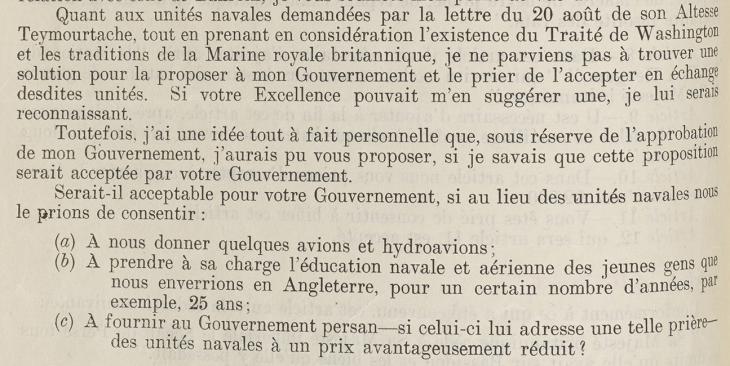
The negotiations collapsed with Teymurtash’s fall from grace in 1932. By this time Britain had decided to abandon its positions at Basaidu and Hengam island, as well as its air route to Asia which traversed Iran’s Gulf coast. The thornier questions of Bahrain and the Abu Musa and Tunb islands, however, remained unresolved, and would complicate Gulf politics for decades to come.
Meanwhile, the oil industry, centred on the Gulf coast, remained in British hands. Though Reza Shah secured some small changes to the oil concession in 1932, Iran never received a fair share of the profits from the Anglo-Iranian Oil Company’s refineries in Abadan. In light of this basic inequity, there was a limit to Reza Shah’s ability to stand up to Britain.
Downfall
British encroachment in Iran eventually led to Reza Shah’s downfall. In 1941 Britain and the USSR invaded and occupied Iran to open a supply route to Russia. Britain launched its attack from the Gulf, destroying Iran’s Italian-built navy in the process. For all Reza Shah’s efforts, Iran was again subject to foreign domination. Reza Shah himself, because of his links with the Axis powers, was forced to abdicate and sent into exile in South Africa, where he died in 1944.
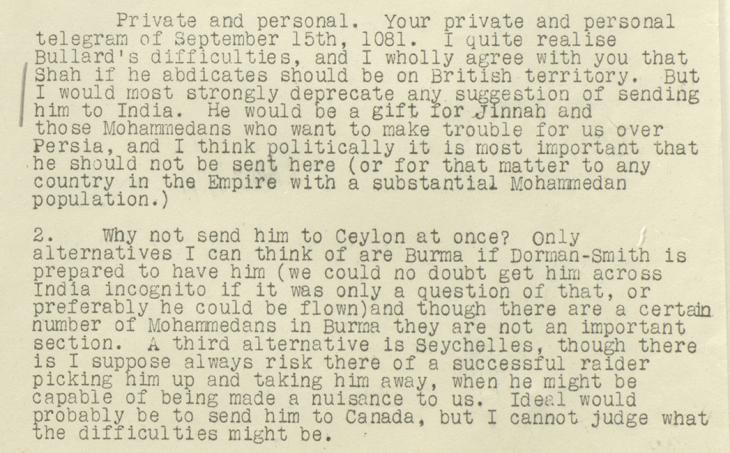
Reza Shah’s legacy, however, endures. His government laid the blueprints, and the fault lines, for Iran’s emergence as a power in the modern Gulf region. Across rulers, systems, and political alignments, his demand for a recognised role for Iran in the Gulf lives on.






